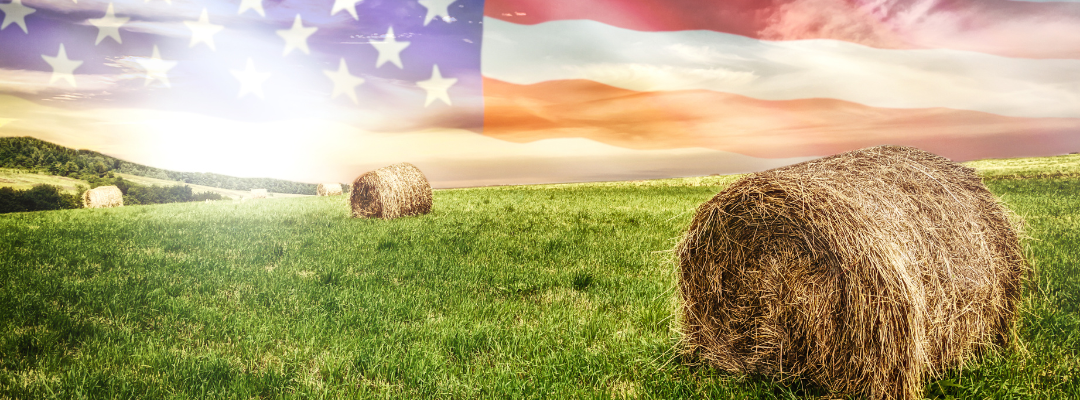A common question we’ve been fielding since passage of the One Big Beautiful Bill: “with all this money coming from the Federal government, why do farmers keep complaining?” It’s generally followed by: “you just can’t make some people happy.”
There’s no question the Federal government has provided a robust level of assistance. For example, the American Relief Act in December 2024 provided $30.78 billion in relief—$10 billion for economic assistance and $20.78 billion for natural disaster assistance. The recently-passed One Big Beautiful Billprovided approximately $62 billion (10-year total) in improvements to the farm safety net.[1] While these sound like big numbers—because they are—it’s important to put them in context.
First, for the $10 billion in economic relief from the American Relief Act—implemented by USDA as the Emergency Commodity Assistance Program (ECAP)—Congress required USDA to calculate losses from the 2024 crop year and then limited the amount of assistance to 26% of the loss. In other words, for losses incurred by producers last year, they were required to shoulder 74% of that loss on their own.
Second, for the $20.78 billion in relief for natural disasters in the American Relief Act—implemented by USDA as the Supplemental Disaster Relief Program (SDRP)—Congress limited USDA to covering no more than 90% of losses incurred in 2023 and 2024. While that certainly sounds like a lot, once the total losses were estimated by USDA, they were only able to cover 35% of the losses based on the funding provided by Congress. So, SDRP effectively covers, at most, just under 32% of the loss (or 35% x 90%).
Importantly, ARC and PLC also will help cover losses from the 2024 crop year once paid in October 2025, but that assistance is at the old levels last adjusted more than a decade ago in the 2014 Farm Bill. In other words, the relief provided by the American Relief Act was all retroactive for losses already incurred and only covered a portion of the losses.
What about the 2025 crop year? While the One Big Beautiful Bill made several improvements to the farm safety net—from increasing reference prices from 10-20% to adding up to an additional 30 million base acres nationwide—most of the improvements kick in with the 2025 crop year. Congress stipulated (using the same schedule that has been in place since the 2008 Farm Bill) that payments cannot be made until October 1 of the year following the end of the marketing year for a crop. Translation: the new assistance won’t go out the door until October 1, 2026. Yes, you read that right. Further, the magnitude of the projected losses to the 2025 crop are such that the assistance will, yet again, only cover a small portion of the loss. Consider the following example:
The estimated national average cost of production for soybeans in 2025 is $639.15/ac.[2] Using USDA’s August 2025 World Agricultural Supply and Demand Estimates (WASDE), the expected return for soybeans is $535.80/ac (or a planted-acre yield of 53.05 bu/ac x $10.10/bu), for an expected loss of $103.35/ac (or $1.95/bu).[3] The question is how much of that loss will be covered by the new-and-improved ARC and PLC. At present, PLC is projected to pay $0.61/bu and ARC—assuming average yields—would pay $0.85/bu.[4] Assuming the farm is fully based—where both ARC-CO and PLC use a payment factor of 85%—you effectively receive $0.7225/bu (or 85% of $0.85/bu). In other words, while the One Big Beautiful Bill provided significant improvements, in the case of soybeans (and virtually every other row crop to varying degrees), it will cover just 37% (or $0.7225/$1.95) of the loss…when it arrives next year. Losses upon losses. Starting to see why folks are concerned?
To pull all of this together: yes, significant assistance has been provided to the countryside, but on average, it only covers a fraction of the past/projected losses. That is why you are hearing a collective groaning in the countryside. What to do about it? Absent new trade deals that spur additional demand, a renewed focus on in-kind food aid, or commodity-specific demand levers (think ethanol for corn)—and perhaps in addition to all of those things—we suspect Congress will begin contemplating yet another round of disaster aid this fall and/or the Trump Administration will begin discussing intervening with trade aid. To those asking us the questions at the top of this article and for the record: we’ve never met a farmer who preferred getting their income from the government…and they can’t wait to break this cycle of praying to simply break even.
[1] According to the Congressional Budget Office’s estimates of outlays in Subtitles C (Commodities), D (Disaster Assistance), and E (Crop Insurance) in Title 1 of the One Big Beautiful Bill (https://www.cbo.gov/system/files/2025-07/61570-pl119-21-2025Recon-CLB.xlsx).
[2] https://ers.usda.gov/sites/default/files/_laserfiche/DataFiles/47913/cop_forecast.xlsx?v=30009
[3] https://www.usda.gov/oce/commodity/wasde/wasde0825.pdf
[4] PLC: https://www.fsa.usda.gov/documents/2025-plc-pdf; ARC: 90% of $12.17/bu (or $10.95/bu) less $10.10/bu.
Fischer, Bart L., and Joe Outlaw. “Why So Much Concern in the Countryside?” Southern Ag Today 5(35.4). August 28, 2025. Permalink

